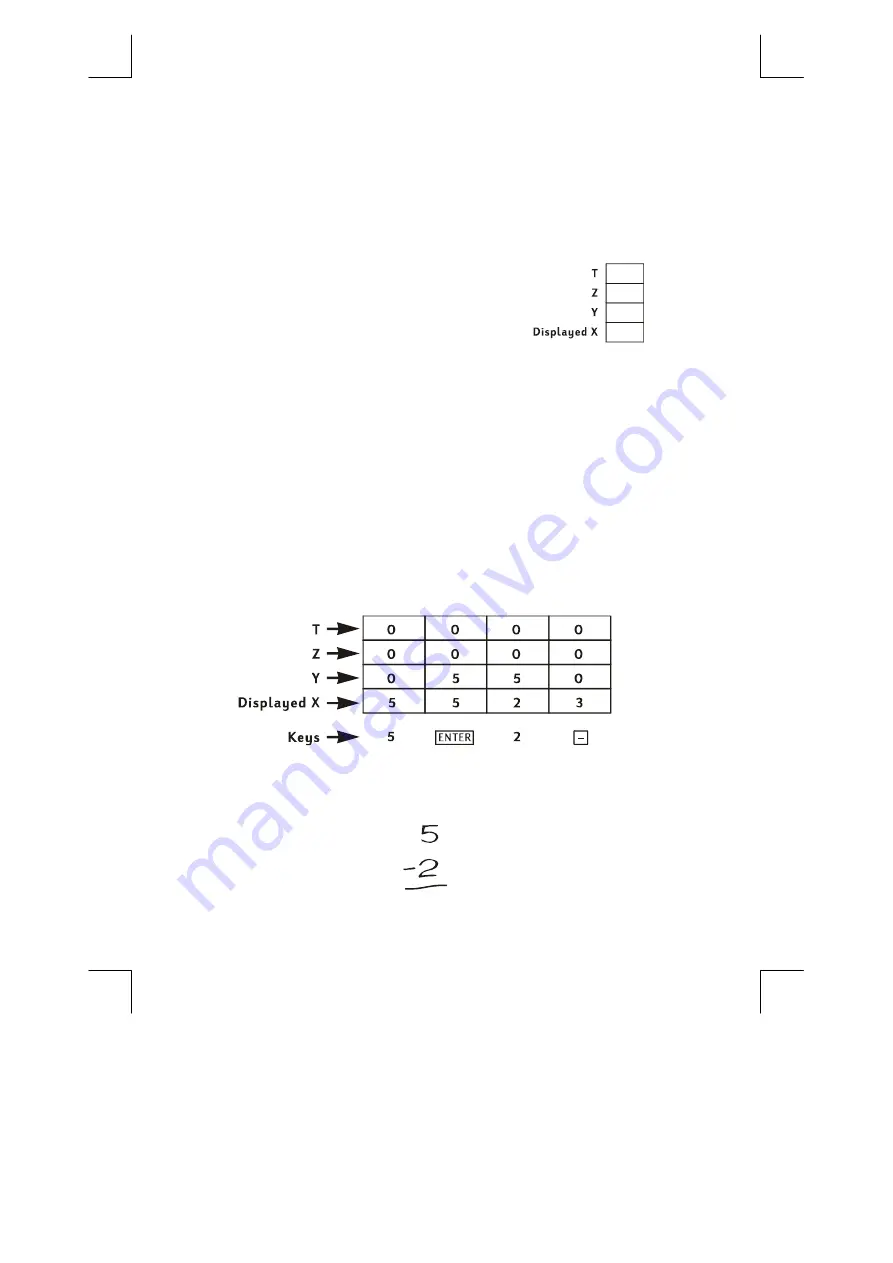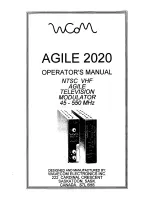
228
File name: hp 12c pt_user's guide_English_HDPMF123E27 Page: 228 of 275
Printed Date: 2005/8/1
Dimension: 14.8 cm x 21 cm
Appendix A
RPN and the Stack
In RPN mode, four special registers in the hp 12c platinum
are used for storing numbers during calculations. To
understand how these registers are used, they should be
visualized as stacked on top of each other.
(For this reason, they are generally referred to as the “stack registers” or
collectively as “the stack.”) The stack registers are designated X, Y, Z, and T.
Unless the calculator is in Program mode, the number shown in the display is the
number in the X-register (modified according to the current display format).
The number in the X-register — and, for two-number functions, the number in the
Y-register — are the number(s) used in calculations. The Z- and T-registers are used
primarily for the automatic retention of intermediate results during chain
calculations, as described in section 1.
Before we discuss the details of the stack operation, let’s take a quick look at how
the stack is used in a simple arithmetic calculation and in a chain calculation. For
each key pressed in the keystroke sequence, the diagram illustrating the
calculation shows, above the key, the numbers in each of the stack registers after
that key is pressed.
First, let’s consider the calculation of 5 – 2:
The diagram shows why we said in section 1 that the
\
key
separates
the
second number entered from the first number entered. Note also that this positions
the 5 in the Y-register above the 2 in the X-register — just like they would be
positioned if you wrote the calculation vertically on paper:







































